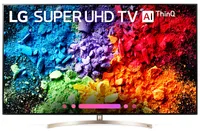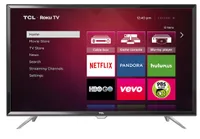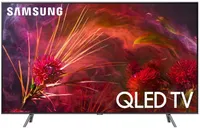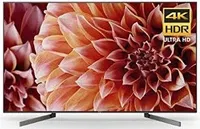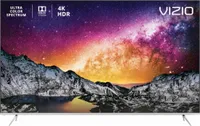Who Makes the Smartest Smart TV? Here Are the Results
From LG's webOS and Roku TV to Samsung's Tizen and Amazon Fire TV, we test and rank all of the top smart TV platforms.
What makes a great smart TV? We ask ourselves this very question every time we test and review a new TV. But our reviews also have to take into account everything else about a TV – the picture quality, the sound, the price and several other features. Finding the best TV will often force us to pay less attention to the nuances of software and smart functions.
So we set out to answer the question: What's the smartest smart TV? What's the best smart TV platform, with the best features, the best usability, the most content available?

Smart TVs have rapidly grown from a fringe product for early adopters to a mainstream must-have found in millions of homes. Where it was once novel to have a TV you could watch Netflix on, it's now the norm. When even the cheapest budget model TVs come with robust ecosystems of apps and connected devices, it's worth wondering which smart TV platform is the best.
- The best Netflix series to watch next
- Our picks for the best Netflix movies
It's also an area where you can be overwhelmed with details. Does it have a voice assistant built in? Will it talk to all your smart-home devices? What's the app selection like? With so many questions swirling about, it's easy to give up and think they're all the same, or perhaps too varied in their details to make meaningful distinctions.
To find our answers, we spent time with new TVs using the latest versions of each major smart TV OS. We not only probed the platforms for features and functionality, we also judged them based on ease of use, simplicity of navigation and overall functionality.
In the end, our favorite smart TV platforms were LG's webOS as the best overall, and Roku TV as the best platform that isn't tied to a specific brand.
Editors' Note: (Updated April 18, 2019) Amazon Fire TV OS is getting better, with a newly announced cooperation with Google, and an official YouTube app is now coming to Amazon Fire TVs, fixing one of our biggest problems with the Amazon-powered smart TV. Overall smart TV OS rankings for 2018 remain unchanged.
Get instant access to breaking news, the hottest reviews, great deals and helpful tips.
Smart TV Scorecard
| Row 0 - Cell 0 | LG webOS | Roku TV | Samsung Smart TV (Tizen) | Android TV | Vizio SmartCast | Amazon Fire TV OS |
| Interface (20) | 20 | 20 | 20 | 8 | 12 | 12 |
| App Selection (20) | 12 | 16 | 16 | 20 | 12 | 12 |
| Voice Interaction (10) | 10 | 8 | 6 | 10 | 4 | 10 |
| Smart Home Integration (10) | 8 | 8 | 10 | 8 | 6 | 6 |
| Remote Control (10) | 10 | 8 | 8 | 4 | 6 | 8 |
| Performance (10) | 10 | 8 | 8 | 6 | 4 | 6 |
| Advertising (10) | 8 | 10 | 8 | 4 | 8 | 4 |
| Content Sharing (10) | 8 | 6 | 8 | 10 | 10 | 4 |
| Overall (100) | 86 | 84 | 84 | 70 | 62 | 62 |
LG's TVs are already well-known for their high-quality OLED displays and Dolby Atmos sound, but we found that webOS delivered a consistently enjoyable smart TV experience that made it easy to navigate from one app to another, provided plenty of functionality for both streaming content and interacting with smart-home devices, and delivered the best voice-assistant technology of any smart TV we've tested.
And if you want something that isn't tied to a specific brand of TV, Roku TV came in a close second. The simple interface is easy for anyone to use, and Roku offers such a wealth of apps and content – while also making it easy to find – that it puts most competitors to shame. While the voice interaction isn't quite as robust as LG's ThinQ AI, Roku does offer a couple of other excellent extras, like private listening, which lets you listen to your TV through headphones plugged right into either the remote control or your smartphone.
How We Tested
To simplify this process, we broke this down into some key areas and questions.
- User Experience: Are things easy to find, and are menus simple to navigate?
- App Selection: What's the app selection like? Is the app store easy to use?
- Compatibility: Will it work with your smart-home devices? What about a Google Home or Amazon Echo?
- Content Sharing: Is it easy to share content from a phone or tablet?
- Content Search: Is it easy to search for and find content? Are there adequate tools for watching over-the-air broadcasts?
Finally, most of our rankings are based on extensive hands-on testing. We've used every one of these smart TV options, both as part of our review process, but also to get a feel for the finer points of each company's offerings. We've put together detailed guides to TV settings, spoken to company representatives and surveyed customer reactions on our forums and elsewhere.
Best Overall: LG webOS
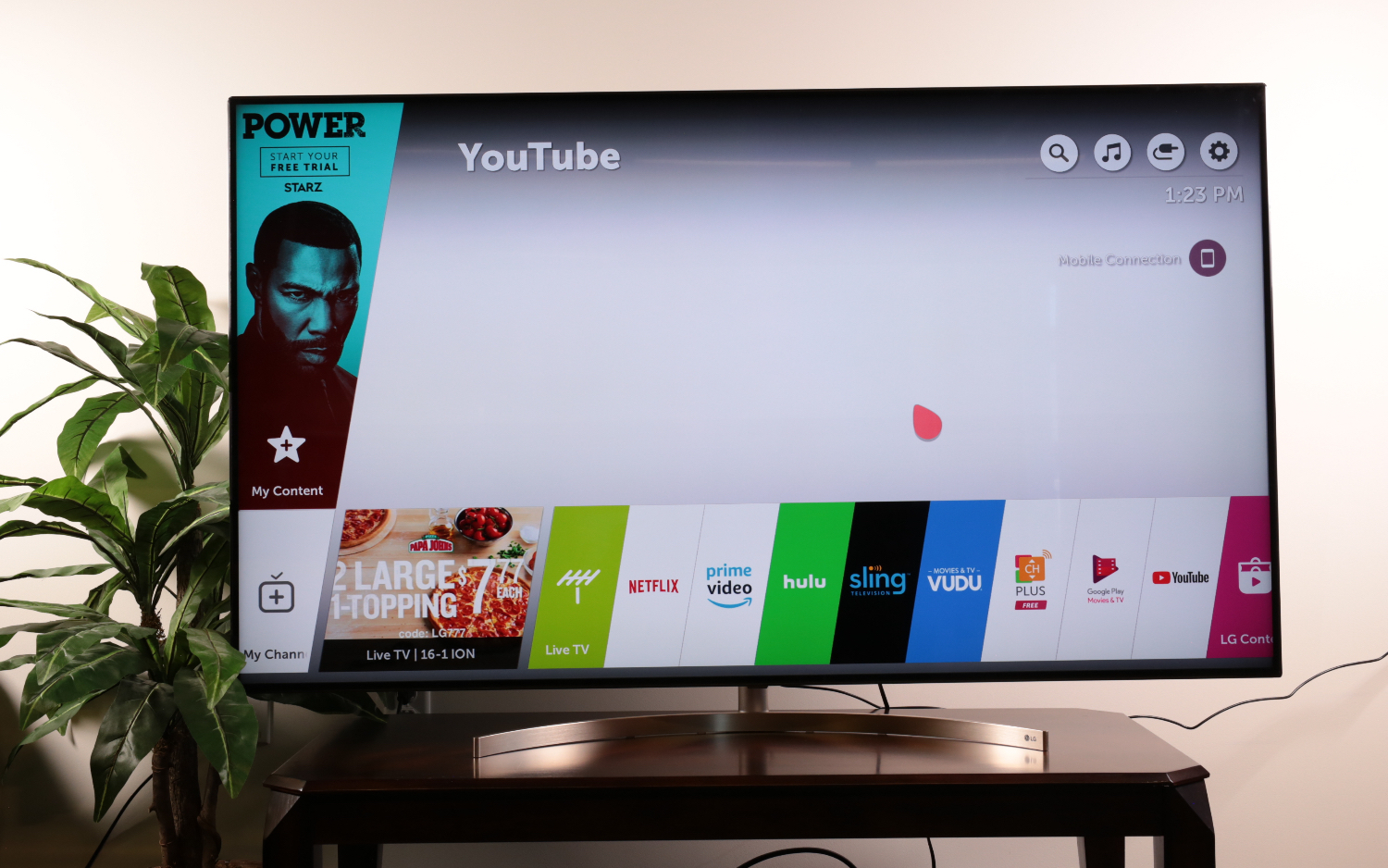
Our favorite smart TV platform is webOS, found on LG's OLED and UHD TVs. It's sharp, clean and full-featured. If you want the best smart TV platform available, this is it.
| Row 0 - Cell 0 | LG webOS |
| Brands | LG |
| Version Number: | 3.5 |
| App Selection: | 451 |
| Voice Interaction: | ThinQ AI w/ Google Assistant |
| Smart Home Integration: | Yes |
| Amazon Echo Compatibility: | Yes |
| Google Home Compatibility: | Yes |
| Screen Cast Capable: | Miracast |
| OTA Guide: | Yes |
| Universal Search: | Yes |
| Dedicated App: | LG TV Plus |
You'll see why webOS is great the moment you set up a new LG TV. The interface is simple and clean, with a single row of apps running along the bottom of the screen. This ribbon menu keeps your content front and center, and makes it easy find the apps you want without struggling to remember if an app wound up in a separate menu.
- Top webOS TV: LG 65SK9500 Super UHD 65-Inch
LG's voice interaction is also the best-in-class, thanks to a combination of LG's own content search and the powerful Google Assistant. The result is a TV that can find all sorts of content, complete with contextual searching – ask it for Bill Murray movies and then follow up by asking about comedies, and it will know to show you comedies starring Murray without your specifically asking it to.
The webOS app selection is quite good, with more than 200 apps to choose from, ranging from popular options (Netflix, Hulu, Amazon Video) to obscure dramas, culturally specific apps and more, organized into simple categories like entertainment, sports, lifestyle and games.
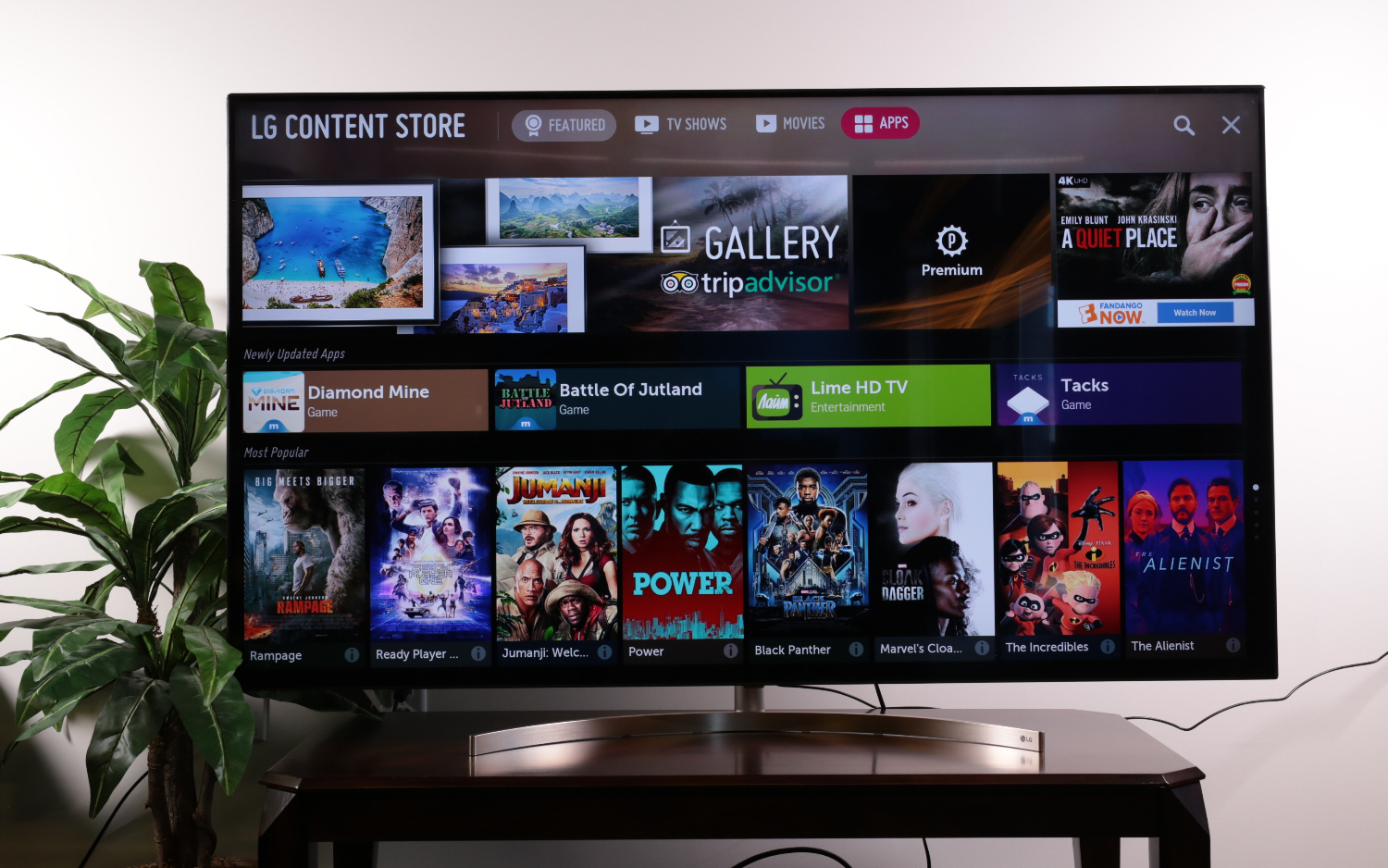
Smart-home capability is full-featured. The Google capabilities of the ThinQ AI system also make it a fully functional Google Home, and anything you can do with a Google Home, you can do with your LG TV. It also integrates with a wide array of smart-home devices, letting you dim your Philips Hue smart bulbs and adjust the temperature on your Nest thermostat using voice commands.
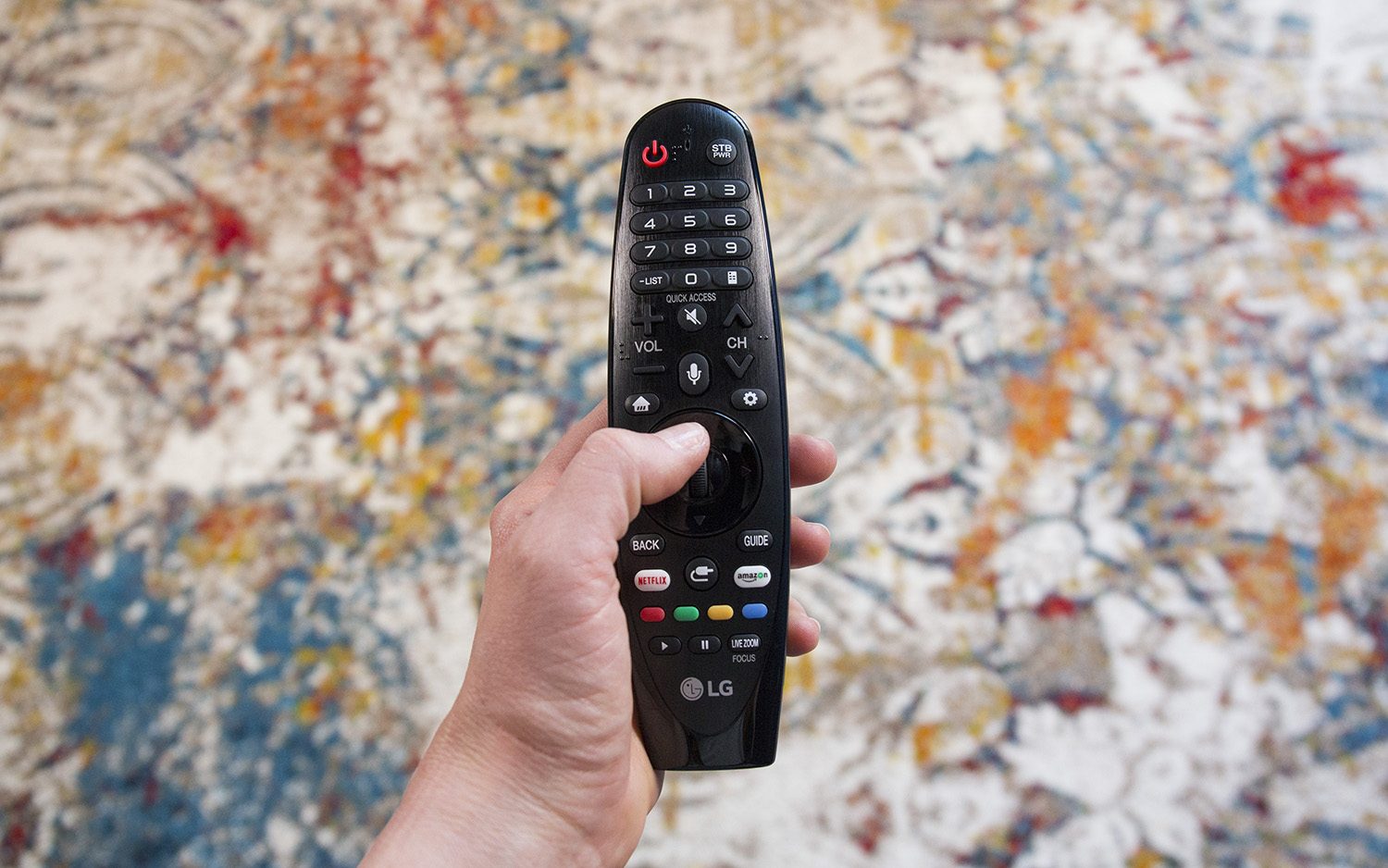
The LG Magic Remote offers the best assortment of navigation controls we've seen on a smart TV, with a clickable scroll wheel for cycling through the home screen's ribbon menu, motion control that lets you physically point the remote to an app or on-screen element, and a built-in mic for voice interaction. Although it may not have the same minimalist look we've praised on other remotes, the design doesn't overwhelm with poorly labeled buttons, but still gives you everything you need to enter in channel numbers, control media playback and more.
- Get a full tour of LG's webOS smart TVs in our 2018 LG TV Settings Guide
Best for Value TVs: Roku TV
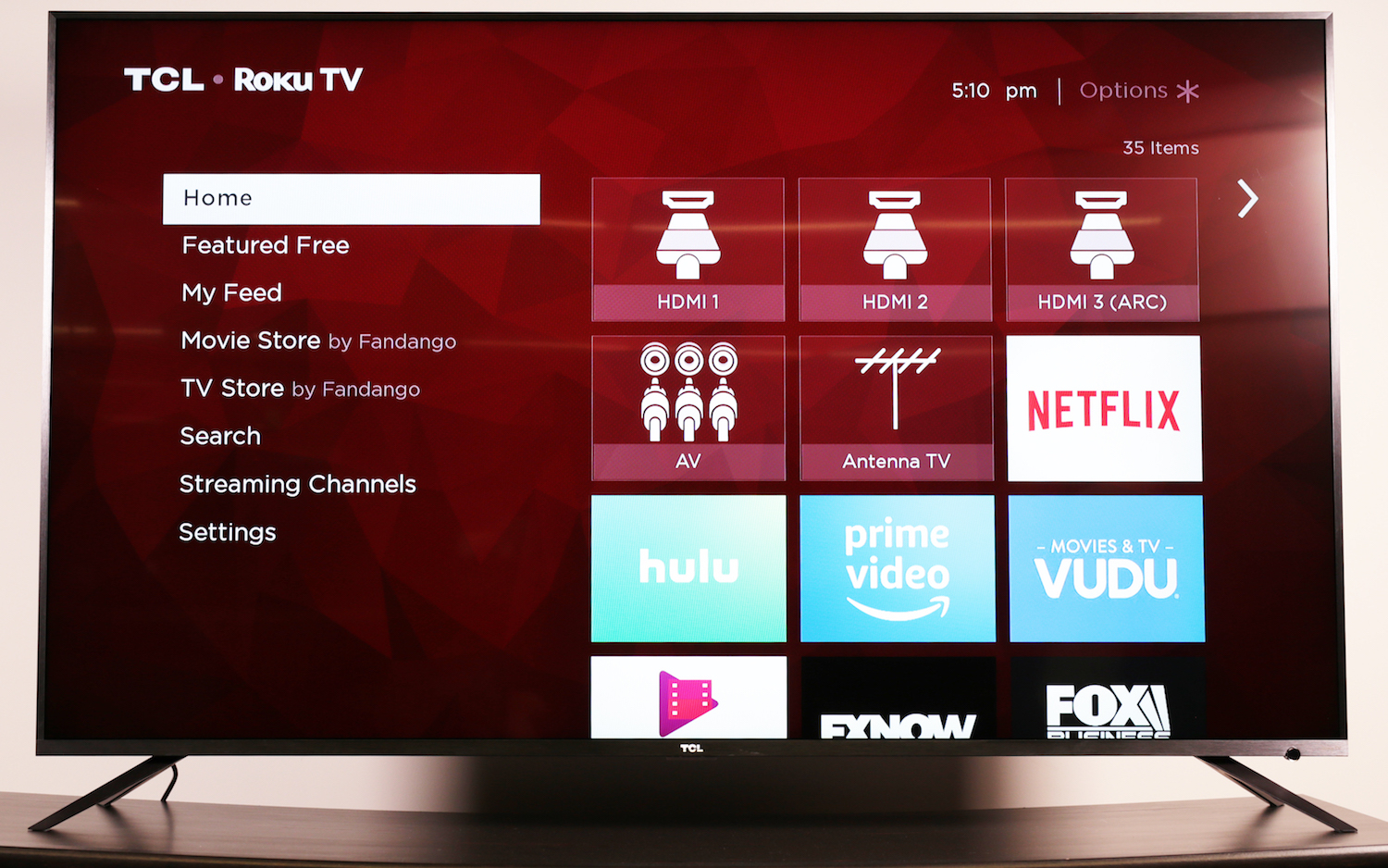
Found on a variety of brands, the Roku smart TV operating system is the most popular smart TV interface on the market. For general smart TV users, who want something that works well and doesn't require using labyrinthine menus to access all of the needed features, it's a sure bet.
| Row 0 - Cell 0 | Roku TV |
| Brands | TCL, Hisense, RCA, Element |
| Version Number: | 8.1 |
| App Selection: | Thousands |
| Voice Interaction: | Roku Voice Search (via remote or app) |
| Smart Home Integration: | No |
| Amazon Echo Compatibility: | Yes |
| Google Home Compatibility: | Yes |
| Screen Cast Capable: | Cast via apps (Android and Windows only) Mirror via Roku app |
| OTA Guide: | Yes |
| Universal Search: | Yes |
| Dedicated App: | Roku Mobile App |
Roku has an enormous app selection – Roku calls them channels, and offers more than 4,000 – and it includes virtually ever popular app you might want. You can get premium Roku TVs, but thanks to affordable models from TCL, Hisense, RCA and others, it's by far the most common OS on budget-friendly TVs. But despite the less-expensive models it's often found on, Roku's smart-TV software is one of the best available.
- Top Roku TV – TCL 6 Series 65-inch Roku TV
The interface is also one of the best, with a simple tiled layout that puts all your apps in one place and makes everything easy to find. All the popular apps seem to be supported, from streaming services like Netflix, Hulu and Amazon Video, to sports channels, premium channels like HBO and Showtime, and other offerings like Google Play TV and Movies, YouTube, VUDU and more.
Plus, the app store is stocked with thousands of apps that offer free content, letting you assemble a wide number of streaming sources without paying a dime in subscription fees.
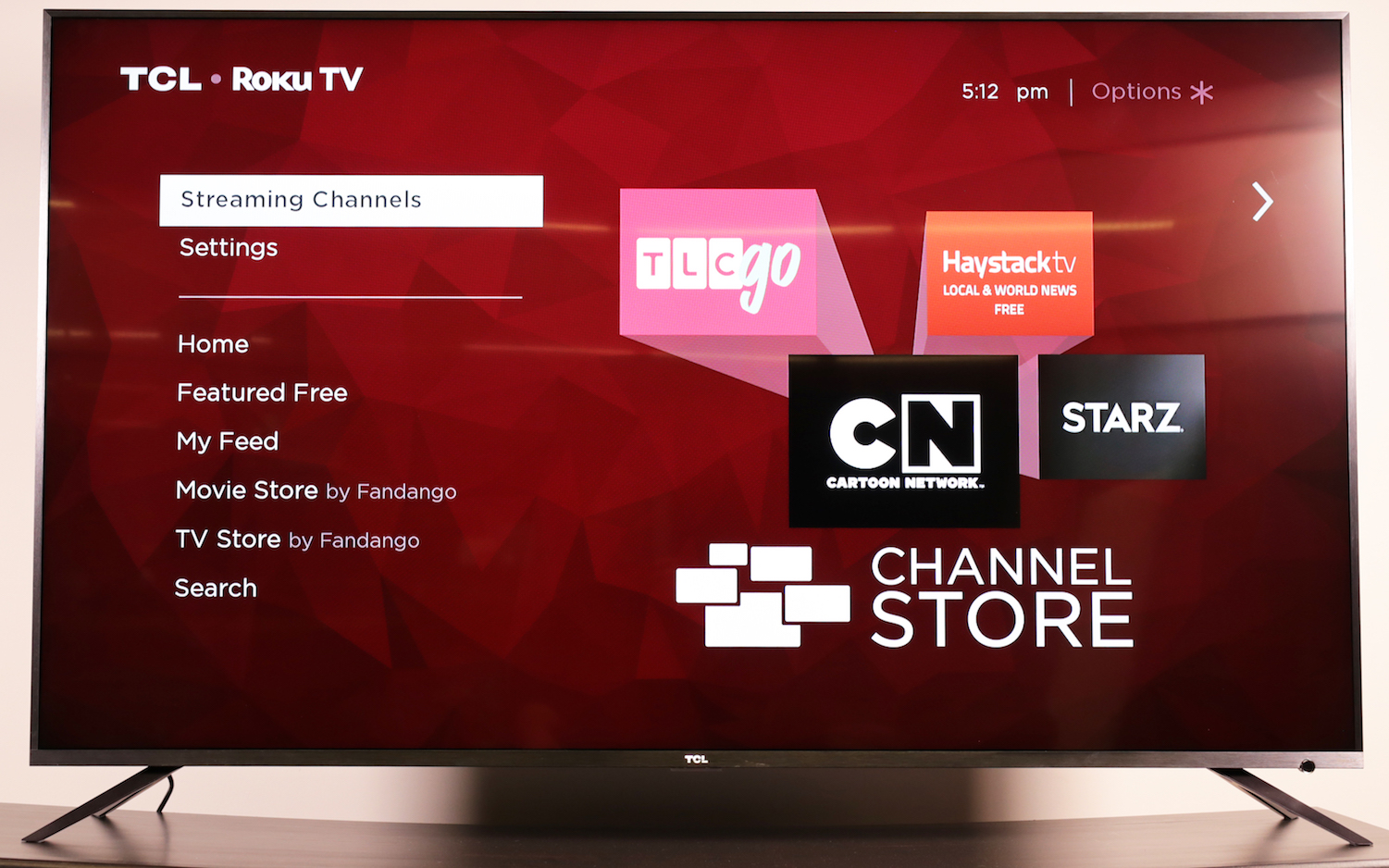
The accompanying remote looks much the same regardless of which company the TV comes from. The small remote is comfortable to hold, and keeps things simple with a prominent purple plus-shaped directional pad, media playback controls, side-mounted volume controls and a few simple navigation buttons.
The best Roku TVs will also have a microphone built into the remote, for voice search, or a headphone jack for private listening, but most won't include these features. However, both options are still available through the Roku TV app.
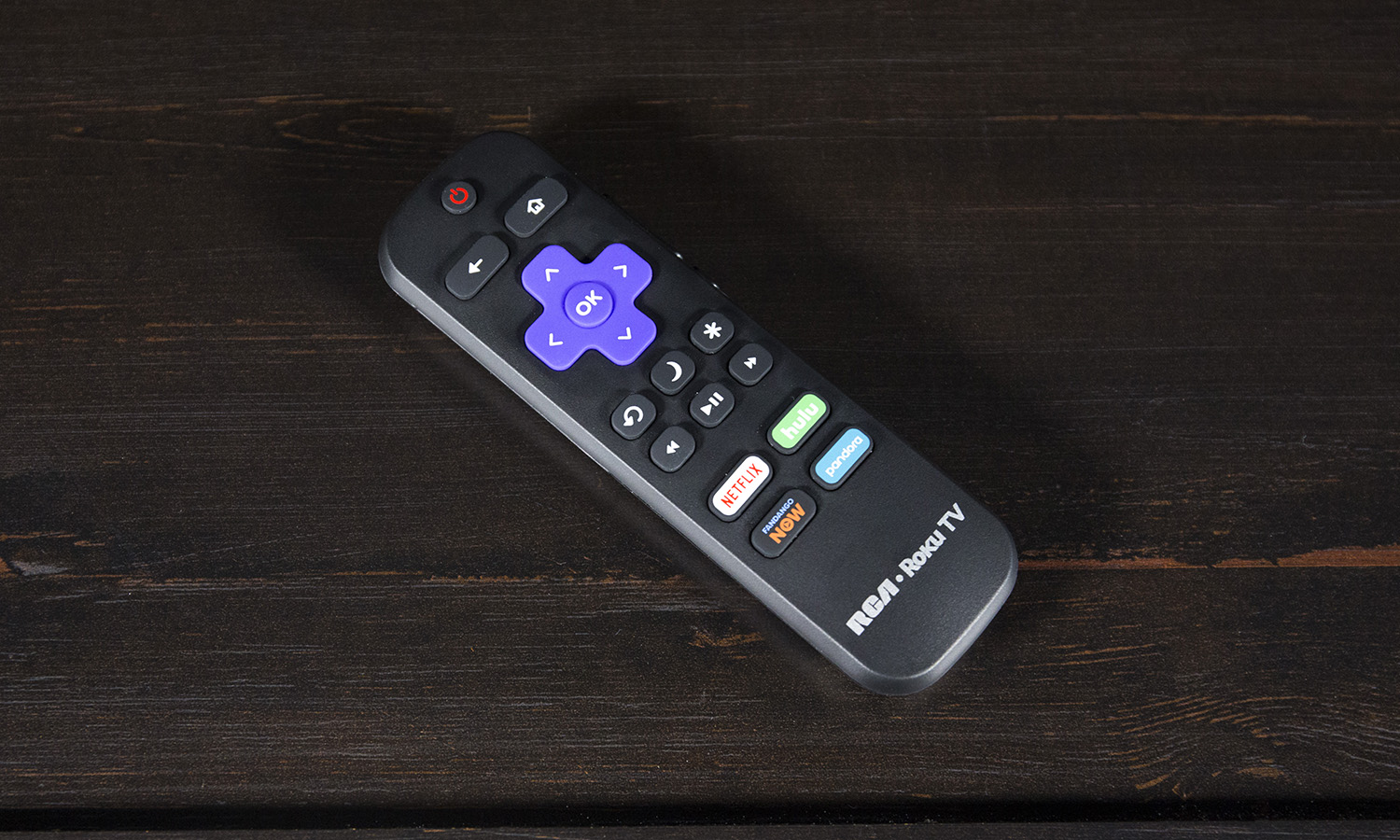
Press the mic button on the remote, or in the Roku app, and you can search for content by title, actor or genre ("Find Harry Potter movies" or "Find comedies starring Dwayne Johnson"). You can open up streaming sources like Netflix and Pandora, or switch inputs ("Switch to Blu-ray player"). You can also control your TV ("channel up" and "volume mute") and use playback commands like "rewind" and "pause."
Our only real complaint is that Roku isn't designed to play well with other smart-home devices. Sure, you can connect an Amazon Echo or Google Home and make a Roku TV part of your larger smart-home system, but connecting those other devices to your Roku TV isn't a smooth process. You can get some functionality from apps, but it's not enough to make the TV the sort of central hub that lets you watch your Ring doorbell's video feed or adjust your Nest thermostat. Instead, the TV remains one of many peripherals, with control handled elsewhere.
MORE: Best smart home devices
Similarly, sharing content between your phone and the TV isn't as simple as you'll get with TV's that have a Google Chromecast built in. But with the correct apps, it's not hard to set up. The simplest option is to use the mirroring option in Roku's own app.
All in all, it's a solidly designed bit of software, and we have yet to find an instance where Roku's excellent smart-TV operating system has been the source of trouble on a TV. If you want the best general-purpose smart-TV platform, you'll find Roku TVs offered by several companies, and while the individual TVs may vary in quality, the Roku side of things is always good.
Best for Smart Homes: Samsung SmartThings (Tizen OS)
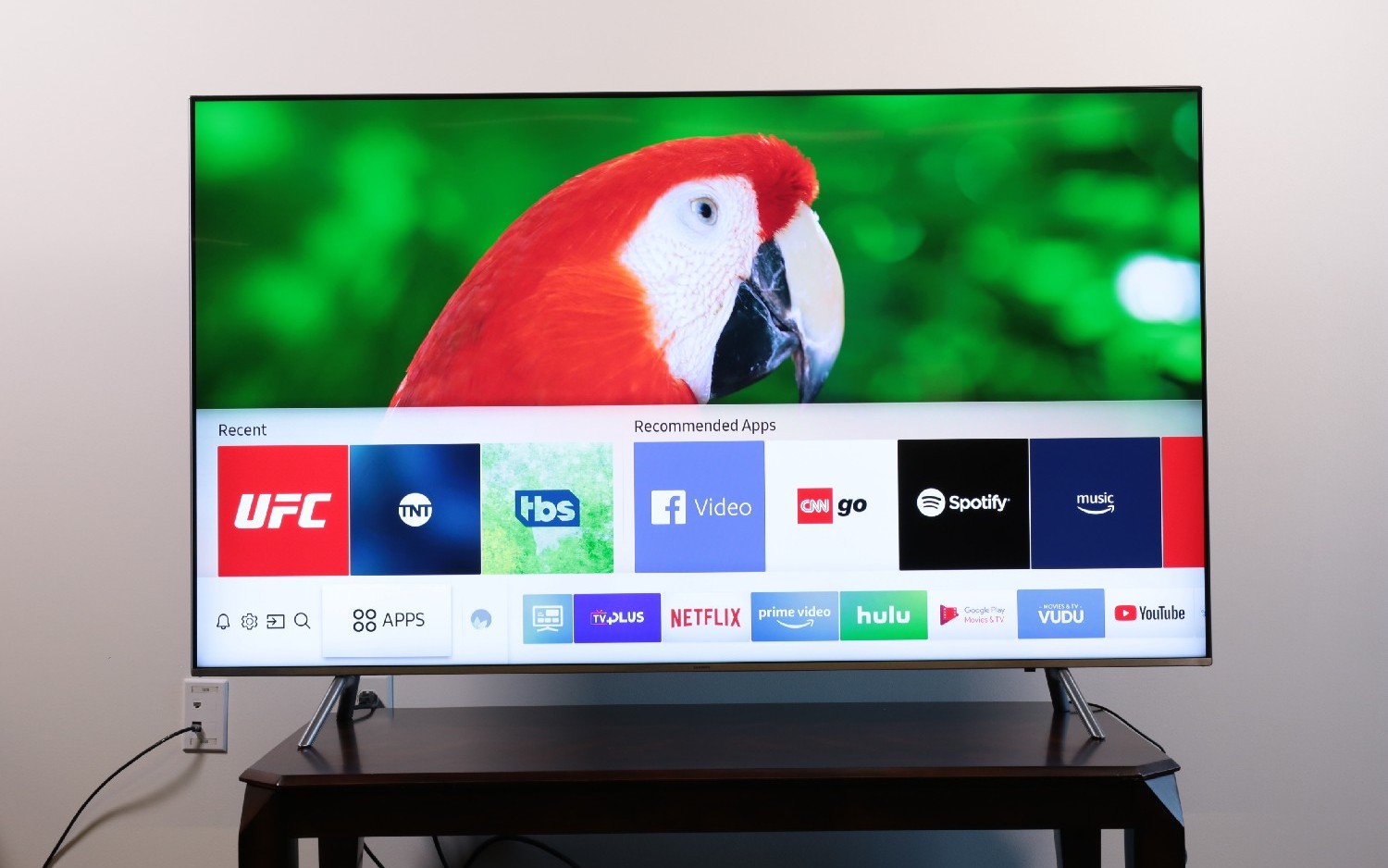
If smart-home integration is a big deal for you, there's no better option than one of Samsung's current TVs.
| Row 0 - Cell 0 | Samsung Smart TV (Tizen) |
| Brands | Samsung |
| Version Number: | 1153 |
| App Selection: | 1355 |
| Voice Interaction: | Bixby |
| Smart Home Integration: | Yes |
| Amazon Echo Compatibility: | Yes |
| Google Home Compatibility: | Yes |
| Screen Cast Capable: | Mirror via Samsung SmartThings app |
| OTA Guide: | Yes |
| Universal Search: | Partial |
| Dedicated App: | Samsung SmartThings App |
While the name of the OS has gone through several branding attempts – at one point it was Smart Hub, then Smart TV, now it's SmartThings – the core of the smart TV platform is Samsung's Tizen OS, the same software that undergirds Samsung's numerous connected home devices, from appliances like refrigerators and robot vacuums, to smartwatches and Wi-Fi routers.
- Top Samsung Smart TV – Samsung Q8FN QLED TV
SmartThings also works with dozens of third-party smart devices, like smart locks, lights, thermostats and more. It even has optimized connectivity for the Microsoft Xbox One and all of Samsung's home-theater products, like soundbars. All of these options are plugged into the SmartThings dashboard, which lets you control everything from your TV, on the comfort of your couch.
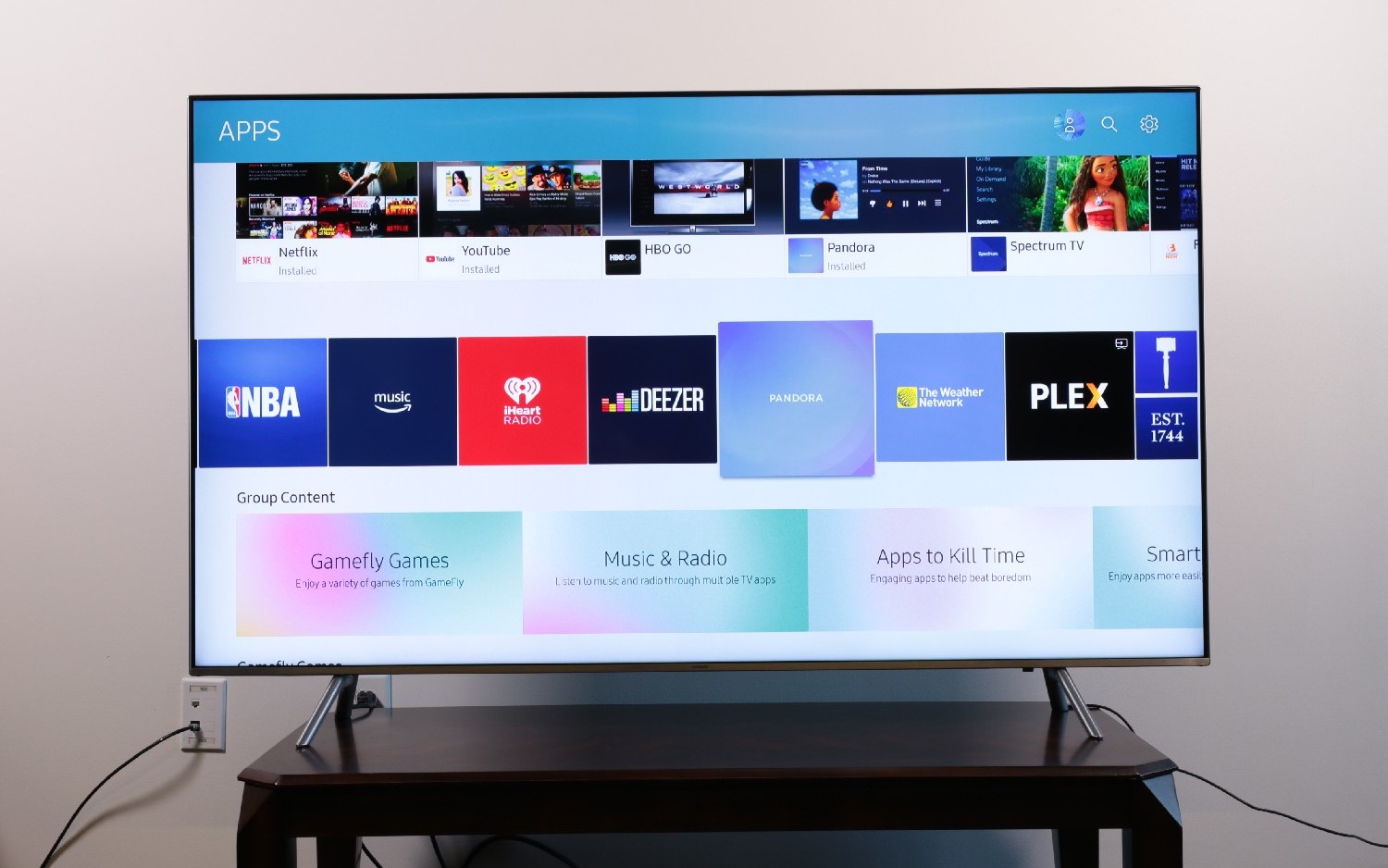
But Samsung's TVs have plenty of smarts in other areas. For voice interaction, there's Bixby, the same Siri- and Alexa-like assistant found on Samsung phones like the Galaxy Note 9 and Galaxy S9. It's not quite as polished as its better-known competitors, but Bixby still offers great content-finding capability and general-information search.
The Universal Guide built into Samsung's smart TVs makes it easier to find shows and movies through both free and paid sources. The on-screen guide pulls titles from all the supported apps and services, including cable providers, and aggregates its suggestions into a separate interface just for search and content suggestions. The search tool divides results up into five tabs: For You, TV Shows, Movies, Sports and Music. From here, you'll be able to find all sorts of content, and automatic recommendations are also made, based on your viewing habits and what's popular in your area.

Bixby voice control also lets you search and control your TV by voice. Basic functions can be controlled with phrases like "turn the volume up" and "switch to HDMI 1," while content search lets you search for content ("Find popular comedies starring Will Ferrell") or launch individual apps ("Play sleeping music on Spotify"). It also lets you use voice to control smart- home gadgets, letting you say things like "Pause the robot vacuum in SmartThings."
It's also got the easiest set-up process ever… at least for Samsung users. If you've got a Samsung smartphone, or use the SmartThings app, the TV will automatically detect the phone on your Wi-Fi network, and give you the option to import all your app logins, so you don't have to input your credentials by hand. If you've got several accounts to apps like Netflix, Hulu and Amazon Video, it's a seriously convenient feature.
The Samsung Smart TV app store might be the best balance of quality and quantity of any smart TV we've seen. Samsung curates the app selection well, so you won't be inundated with low-quality fart apps and skeevy video-streaming apps, but all the major apps and services are represented. With more than a thousand apps, you'll be able to find pretty much everything you want, with none of the low-quality filler.
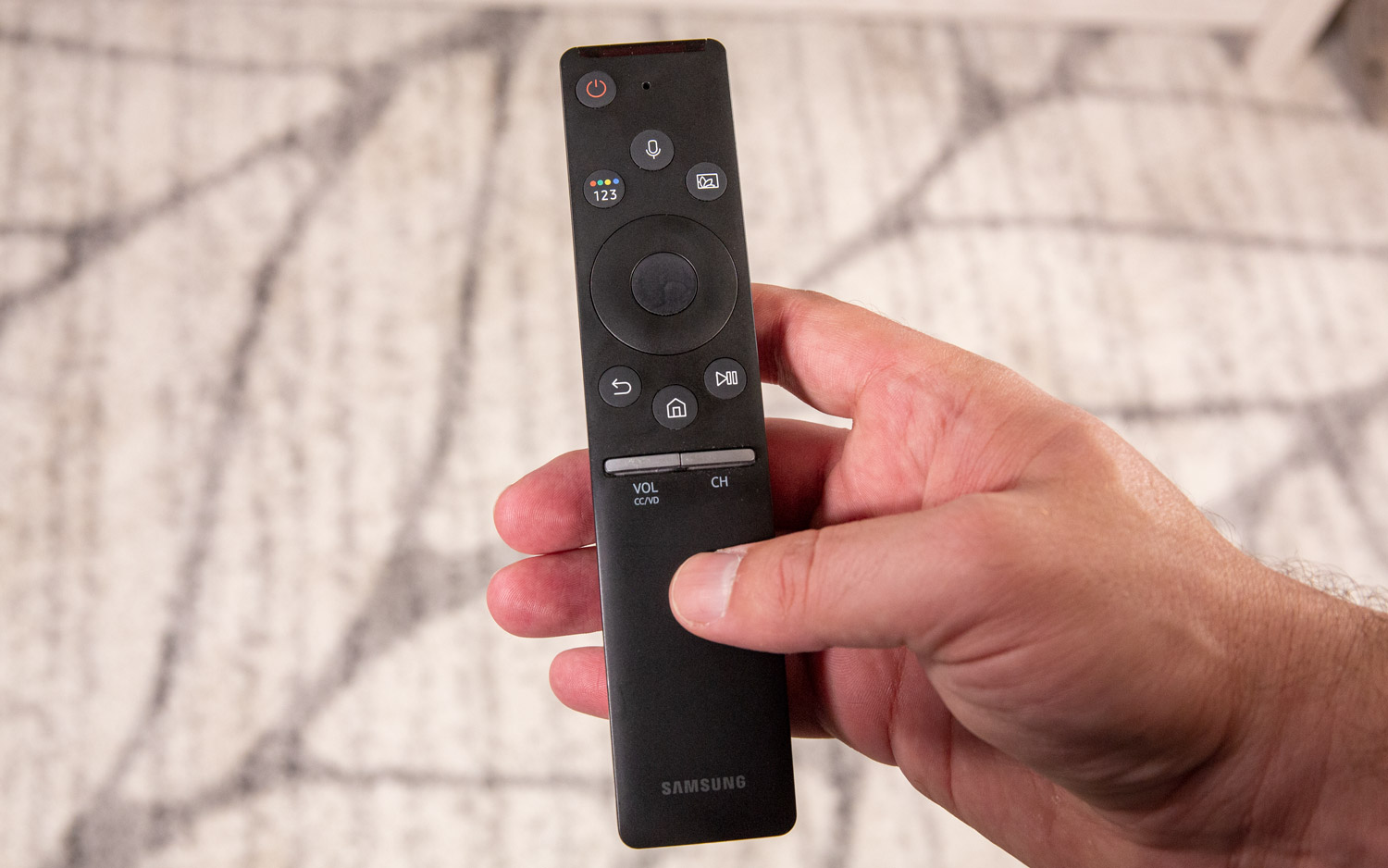
Finally, the Samsung One Remote is one of the best out there, and it definitely sets the bar for minimalist wand-style designs. The simple design gives you a ring-shaped directional pad, with buttons for key functions – home, back, play and pause, and simple up-and-down controls for volume and channel selection. There's a dedicated button for the screensaver Ambient mode, and a microphone button that lets you speak to Bixby.
But it's not all perfect. Bixby isn't quite as robust as Google Assistant, with more issues understanding phrases in our testing, and with some heavy branding that you won't get with other voice assistants. You'll get a Bixby logo instead of the more common microphone, and Bixby refers to itself by name frequently, like it's trying too hard to make "Bixby" happen.
At the end of the day, the Samsung Smart TV OS is one of the most polished smart-TV experiences out there, making it a great entertainment platform, and the best smart-home control center on the market.
- Meet Samsung's Smart TV in our 2018 Samsung TV Settings Guide
Android TV: Best for Google Fans and Google Home Users
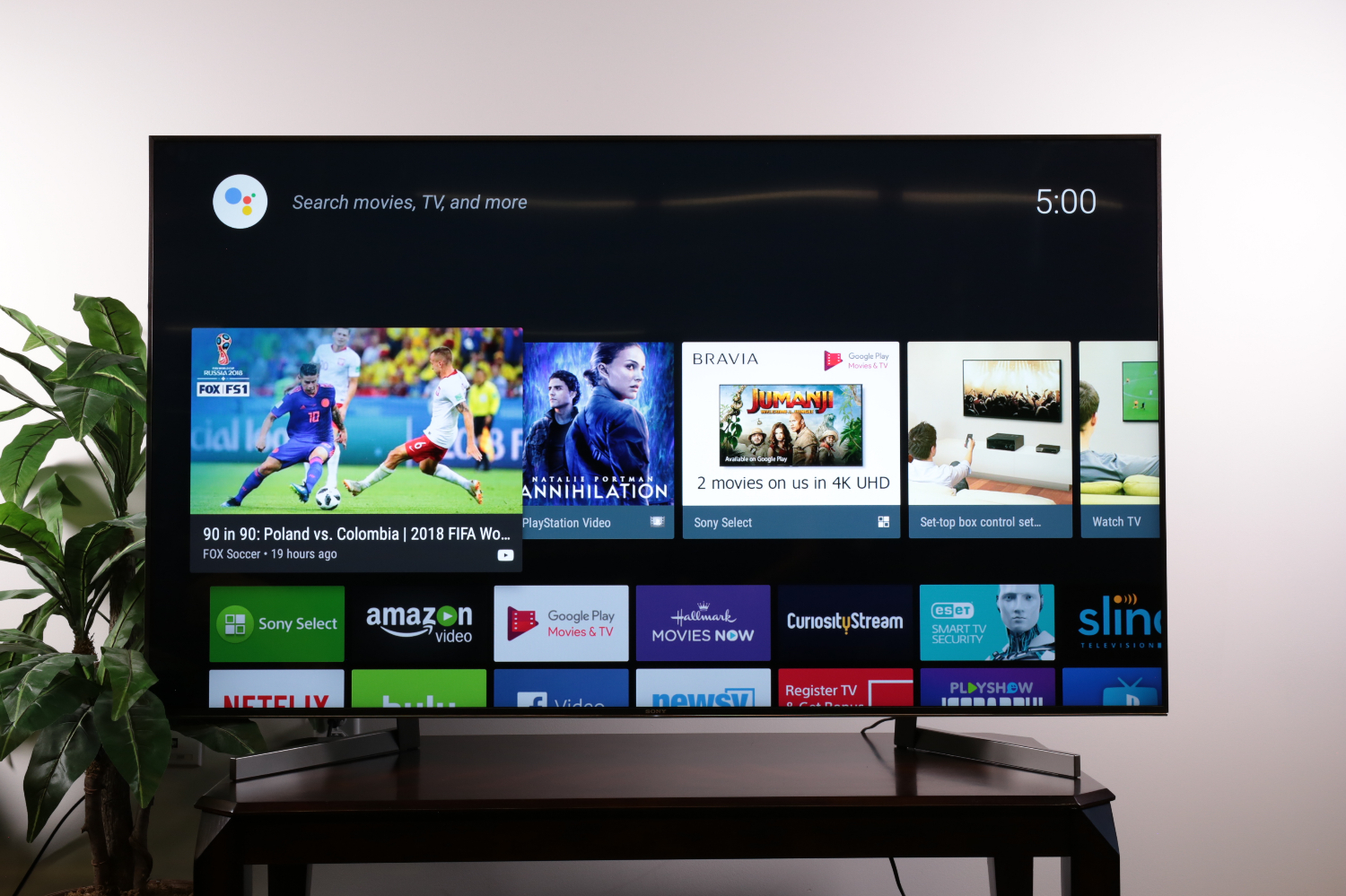
While Android TV is a brand-agnostic smart-TV platform offered by Google, you won't see a lot of Android smart TVs on the market. U.K. shoppers will see it show up on some Phillips TVs and it's used on a few low-budget Sharp TVs in the U.S., but for the most part, the gorilla in the room for Android TV is Sony, which uses it on all its Bravia smart TVs.
| Row 0 - Cell 0 | Android TV |
| Brands | Sony |
| Version Number: | Row 2 - Cell 1 |
| App Selection: | Thousands via Google Play Store |
| Voice Interaction: | Google Assistant |
| Smart Home Integration: | Yes |
| Amazon Echo Compatibility: | Yes |
| Google Home Compatibility: | Yes |
| Screen Cast Capable: | Chromecast |
| OTA Guide: | Yes |
| Universal Search: | Yes |
| Dedicated App: | Sony Video & TV SideView |
Android TV is a capable smart-TV platform, with some truly sophisticated features and plenty of options for content and games. If you're a serious Google fan, you might get the purest Google-centric smart TV experience on Sony's Android TVs, and you'll get high-quality picture and sound as well.
- Top Android TV – Sony XBR-X900F 65-inch 4K TV
Sony's Android TVs have both Google Chromecast and Google Assistant built in, making it easy to share content between devices and search for everything from specific shows and movies to general online content. You can also use it to perform real-world functions, like monitoring smart gadgets, ordering products or booking an Uber or a Lyft. Anything you can do on a Google Home, you can do on your Android TV, and it has all the same smart-home capabilities, making this a great choice for any Google-centric smart home.
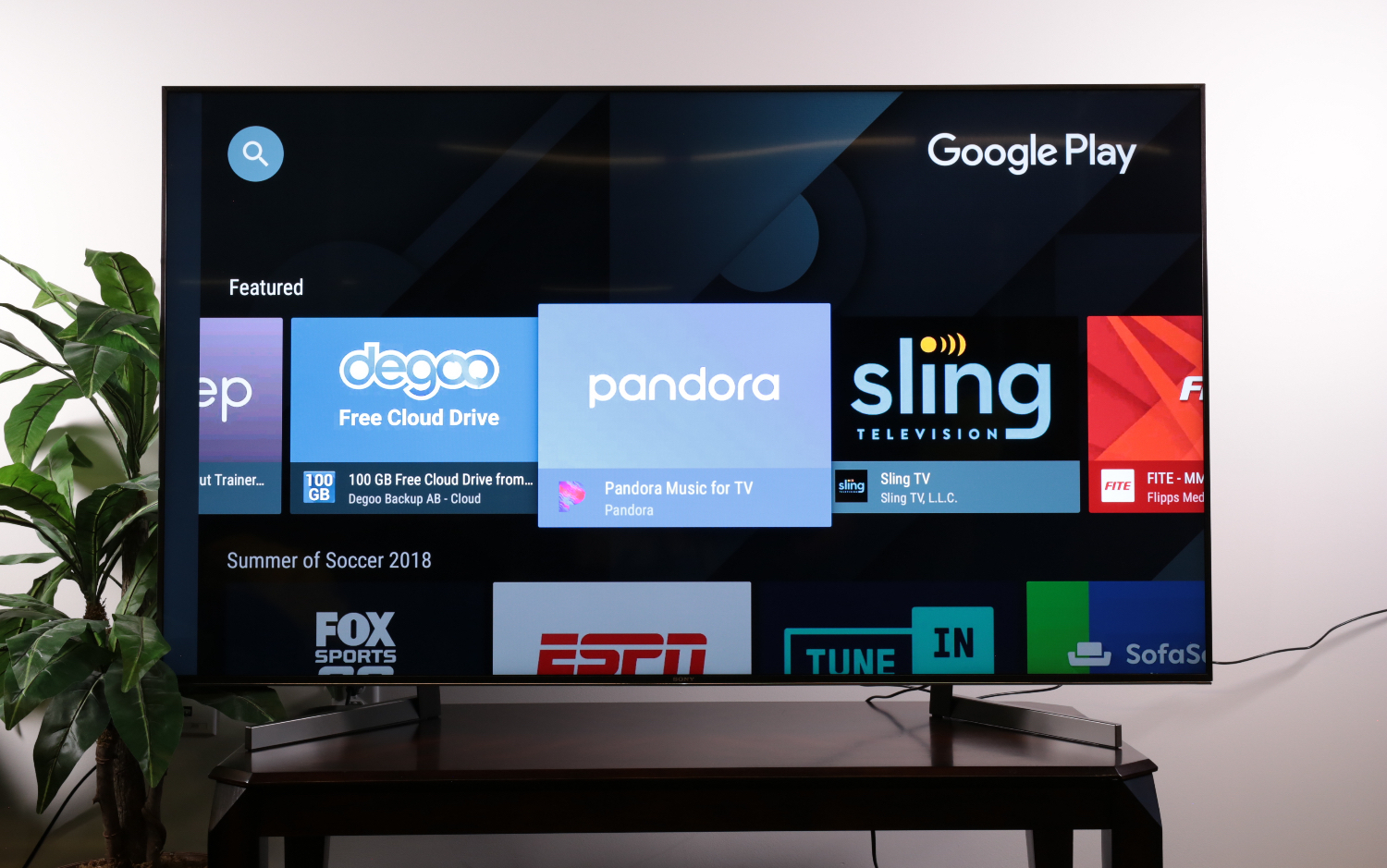
But Sony's Android interface also has some of the most irritating quirks of any smart TV I've looked at. The home screen doesn't just have one or two rows of apps, it has five, breaking things up into categories for content recommendations, featured apps, apps (for all of your non-featured apps), games, inputs and settings. Some of this menu clutter can be reduced by turning off content recommendations and featured apps in the preference settings, but it's a bit of a process.
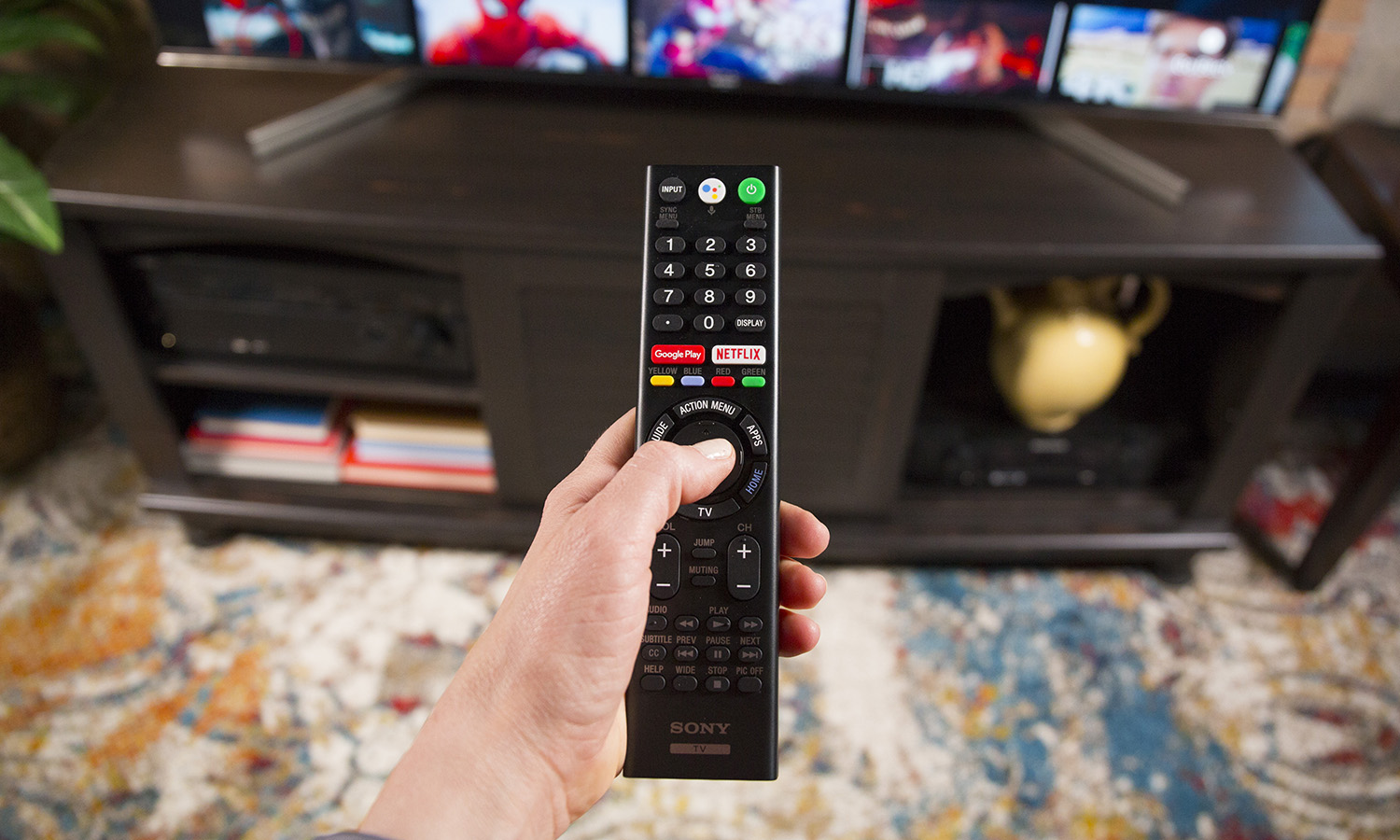
The other major hurdle Sony needs to overcome is its remote-control design. The remotes all check the same boxes: a long rectangular shape, with a similarly boxy profile and plenty of buttons (more than 50 on the last model we reviewed). The directional pad is round, and easy enough to use, but it's surrounded by an outer ring of function buttons for TV, Home, Apps, Action Menu, Guide and Back. These are common functions, but Sony's layout leaves you reading a lot to figure out which is which, and the positioning makes it easy to accidentally press a button you didn't mean to.
Put it all together and you have a smart-TV OS that offers a lot of functionality – perhaps the most of any smart TV – but it's hampered by interface and control issues that are likely to leave users frustrated.
- Get a Closer Look at Sony Android TVs in our 2018 Settings Guide
Vizio SmartCast
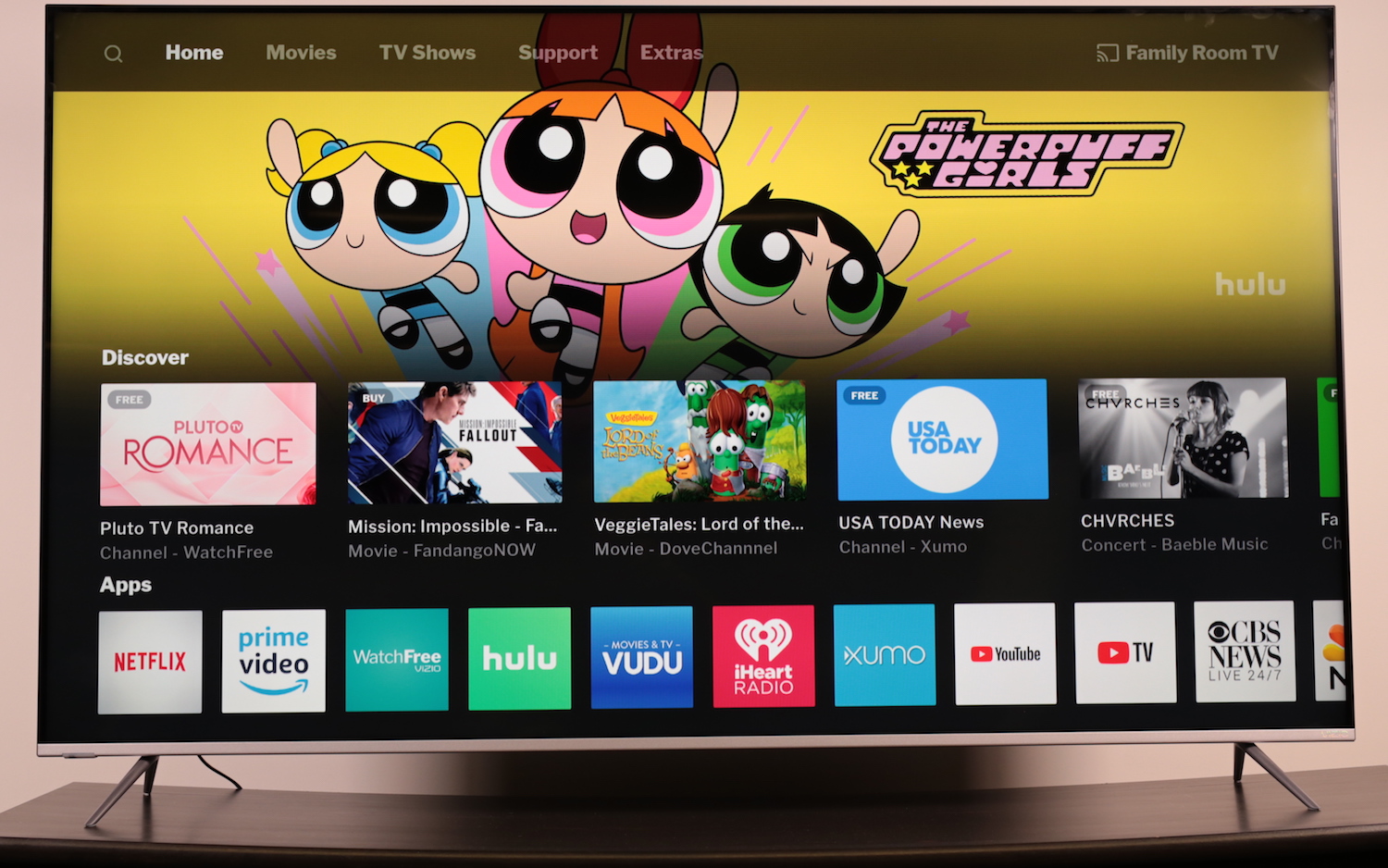
Vizio's SmartCast is an odd duck. On the one hand, Vizio TVs are some of our very favorite smart TVs for cord-cutters, because they offer a lot of excellent options for free content. In addition to several free streaming services prominently featured on the device, Vizio even has its own free service (called WatchFree). which offers dozens of channels and content ranging from movies to shows and more. In addition, Vizio gives it its own input, alongside your media players and game consoles.
| Row 0 - Cell 0 | Vizio SmartCast |
| Brands | Vizio |
| Version Number: | 4.1.2.3 |
| App Selection: | Local: 22 Chromecast: Thousands |
| Voice Interaction: | Voice search via SmartCast App |
| Smart Home Integration: | No |
| Amazon Echo Compatibility: | Yes |
| Google Home Compatibility: | Yes |
| Screen Cast Capable: | Chromecast |
| OTA Guide: | No |
| Universal Search: | Yes |
| Dedicated App: | Vizio SmartCast Mobile App |
On the other hand, Vizio keeps the prices on its TVs lower by offloading some core smart TV functions to other devices – which you may or may not already own. It's still a smart TV, but it's more like a fairly bright TV that works best when it can bring its smarter friends along.
You can use the SmartCast mobile app for voice search, or you can pair the TV with an Amazon Alexa or Google Home, which will then give you a voice assistant that also lets you control TV functions, but you'll need to bring your own.
- Our top Vizio TV, the Vizio P-Series P65-F1
Similarly, there's no way to use a Vizio TV to control your connected home devices. Connect it to a Google or Amazon device and you can make it one of many smart-home products controlled through a different device, but it will never be a central piece of the IoT picture.
Then there's the issue of apps. The SmartCast has Google Chromecast built into the TV, which makes it a snap to share video, stream movies, mirror content and anything else from your smartphone or tablet. This opens up potentially thousands of apps for use on Vizio TVs, but the TV itself has the most limited app selection we've seen – including Amazon Prime Video, Hulu, Netflix, YouTube, Plex, Pluto TV, Vudu and Xumo – with a grand total of 22 locally installed apps.
You can connect an antenna to get over-the-air content, which is a big improvement for Vizio (older models ditched the tuner and RF connector, technically making them "home theater displays" rather than true television sets), but once you have your broadcast channels, there's no on-screen programming guide to see what's coming up next, or what's being shown on other channels. It's the only smart TV operating system to omit this basic feature.
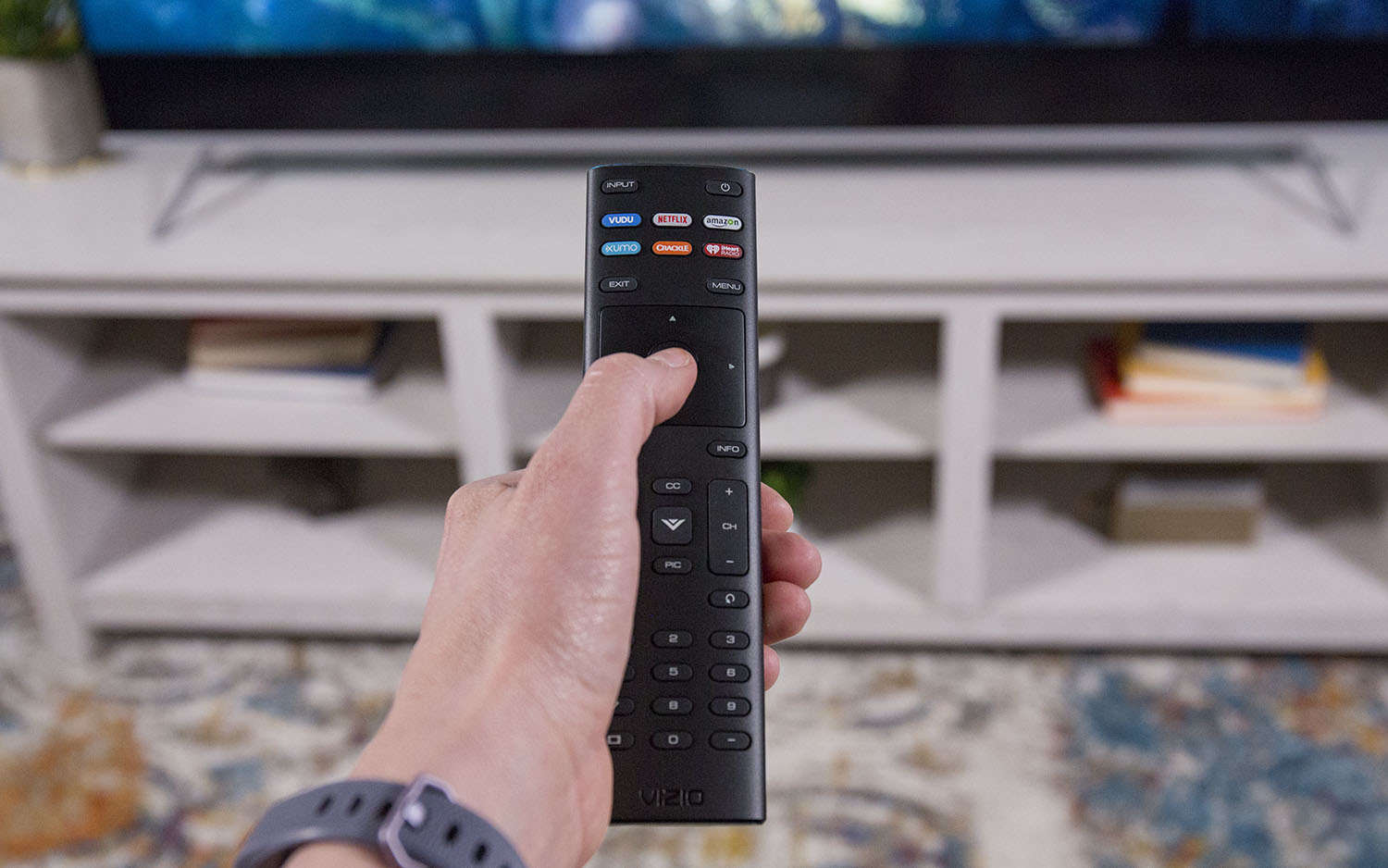
The biggest blow against the Vizio SmartCast, however, is an issue that isn't even a problem on most smart TVs today: It's slow. Firing up the TV, getting to the home screen, switching between inputs; it's all noticeably slower than other smart TVs.
The included remote is fairly basic, with a comfortable oval cross section and all of the requisite buttons for changing volume and channel, controlling media playback, or entering channel numbers. Navigation through menus is done with a square-shaped directional pad, which sits flush with the surface of the remote, making it hard to tell by feel what you're doing. The whole thing is functional, and far from the worst we've seen, but it's failed to impress us over the course of several reviews.
Vizio SmartCast TVs can do a lot, but it asks you to do a lot to get there. If Vizio would provide more functionality in the TV itself, it would be a major player. For cord-cutters willing to bring their own mobile device and voice assistant, it's a capable system. However, that's a lot to ask when so many smart TVs come with these functions built-in.
Amazon Fire TV

Found on Amazon's Fire TV Edition smart TVs – currently made by Toshiba and Insignia – the Fire TV operating system is mostly identical to the software found on Amazon's other Fire TV devices, like the Amazon Fire TV Recast and the Fire TV Stick 4K. Now offered in full TV form, the weakest link in these Amazon-powered smart TVs has never been the software, but the low-budget TVs it has generally come installed on.
Editors' Note: (Updated April 18, 2019) One significant issue with the Fire TV OS has been fixed, with Amazon and Google publicly agreeing to work with each other again. This means Fire TVs will get an official YouTube app, along with other YouTube apps and services, such as YouTube Kids, YouTube Music and (most-critical for cordcutters) YouTube TV. While our overall ranking of smart TV OSes remains unchanged for 2018, we are glad to see needed improvements coming to Amazon's promising options.
| Row 0 - Cell 0 | Amazon Fire TV OS |
| Brands | Toshiba, Insignia |
| Version Number: | Row 2 - Cell 1 |
| App Selection: | Thousands |
| Voice Interaction: | Amazon Alexa |
| Smart Home Integration: | Yes |
| Amazon Echo Compatibility: | Yes |
| Google Home Compatibility: | No |
| Screen Cast Capable: | No |
| OTA Guide: | Yes |
| Universal Search: | Yes |
| Dedicated App: | Amazon Fire TV App |
The Fire TV platform is fairly full featured, with support for thousands of apps, plenty of streaming options, and the cherry on top: Alexa comes built in. That alone makes it one of the best smart TVs out there for voice interaction, and the content search capability is just as good using Alexa as you'll get with Google Assistant, maybe even a bit better. And while the TV version uses a push-to-talk button on the remote, you can also pair the TV with an Echo Dot or similar device to get the same far-field microphones of other Alexa devices.
- Top Fire TV - Insignia 43-Inch 4K Fire TV Edition Review
That Alexa capability makes it great for smart-home use, too. In the same way that an Amazon Echo can control a wide variety of devices with Alexa skills, so, too, can the Fire TV Edition. If Amazon is already at the heart of your smart home, the Fire TV Edition will actually enhance that functionality with a display that can show camera feeds from connected doorbells and video cameras, and works with thermostats, smart locks, connected light bulbs and more. If it works with Alexa, it'll work with Amazon's TVs.
But it all comes with caveats. There are thousands of apps available through Amazon's app store – Netflix, Hulu and HBO (both HBO Go and HBO Now) – and while you'll enjoy a rich ecosystem shared by Amazon's tablets and streaming devices, you'll also see that a large portion of the app selection is dreck.

Some of this is simply the open nature of Amazon's ecosystem. If you have an app to offer, Amazon is happy to sell it. But there's little to no curation, with low-quality apps littering the app store and poor categorization making it difficult to browse.
It's also got some glaring omissions. Amazon and Google have been feuding as the two companies jockey for supremacy online and in people's homes, and as a result, common apps like YouTube and Google TV & Movies aren't available on Fire TV devices. There are some workarounds – like a bookmark to YouTube that goes through the included Firefox web browser – but it's not an official app, and it's an irritating gap in an otherwise complete experience.
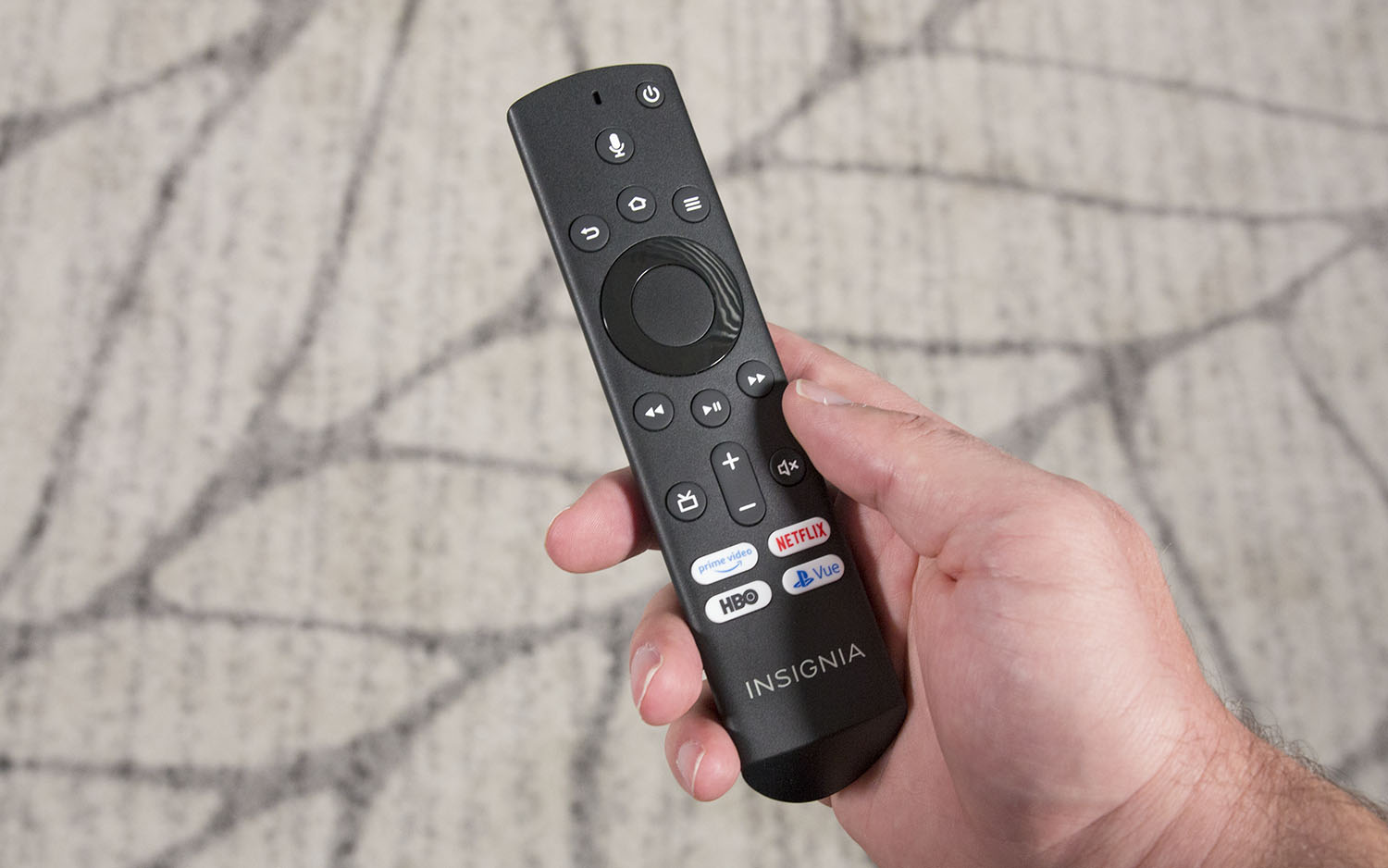
The other problem is advertising. Promoted content and some paid app recommendations are common on smart TVs, but Amazon is a massive retailer, and it won't let you forget it. You'll get ads for Amazon content, ads for Amazon products, and ads for pretty much anything else offered on Amazon.com, which is… everything. Be ready to see all sorts of products – often inspired by your own Amazon shopping and browsing history – interspersed among your shows and apps.
All of these issues aside, Amazon has managed to make a strong new entrant into the smart-TV space. If you're already on board with Amazon's devices and services, the latest Fire Edition TVs will work with all of it, providing a smart TV that matches your smart lifestyle. And some of the biggest problems could be easily fixed with an update or two. Provide common Google offerings, dial back the advertising and make it easier to use the expansive app store, and the Fire TV platform could easily challenge Roku TV as the best smart-TV OS for multiple budget-friendly brands.
Credit: Tom's Guide
Brian Westover is currently Lead Analyst, PCs and Hardware at PCMag. Until recently, however, he was Senior Editor at Tom's Guide, where he led the site's TV coverage for several years, reviewing scores of sets and writing about everything from 8K to HDR to HDMI 2.1. He also put his computing knowledge to good use by reviewing many PCs and Mac devices, and also led our router and home networking coverage. Prior to joining Tom's Guide, he wrote for TopTenReviews and PCMag.
